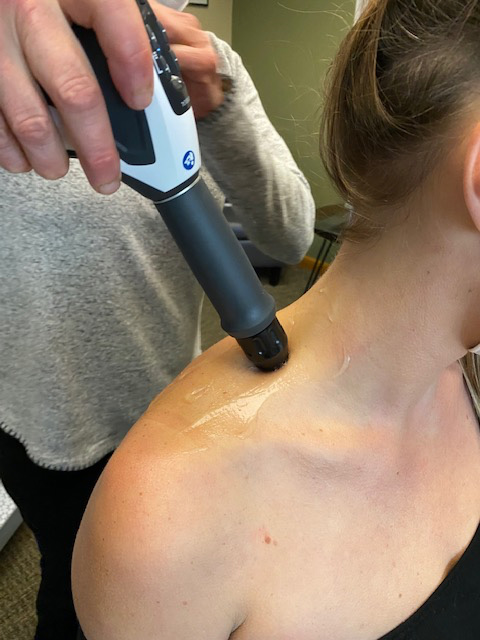Chiropractic Solutions for Piriformis Syndrome Relief
Chiropractic treatment for Piriformis Syndrome represents a holistic approach focusing on reducing pain, increasing mobility, and improving overall function without the use of invasive procedures or pharmaceuticals. This condition, characterized by the piriformis muscle irritating the sciatic nerve, causes pain, tingling, and numbness in the buttocks and along the path of the sciatic nerve descending down the lower thigh and into the leg. Understanding the role of chiropractic care in managing this syndrome requires an in-depth look at various treatment modalities and their effectiveness.
Understanding Piriformis Syndrome

Before looking at chiropractic treatments, it’s essential to understand Piriformis Syndrome. The piriformis muscle is a small muscle located deep in the buttocks, behind the gluteal muscles. It plays a crucial role in allowing the thigh to rotate and move from side to side. In Piriformis Syndrome, the muscle becomes tight or spasms, causing irritation or compression of the sciatic nerve.
Piriformis Syndrome is a neuromuscular disorder caused when the piriformis muscle, located in the buttocks near the top of the hip joint, becomes tight or spasms, leading to irritation or compression of the sciatic nerve. This can result from injury, prolonged sitting, overuse, or biomechanical issues like pelvic misalignment or muscle imbalance.
Piriformis Syndrome presents a range of symptoms primarily centered around discomfort in the buttock and leg. The most common symptom is a deep, aching pain in the buttock, often exacerbated by sitting for prolonged periods or performing activities that involve the piriformis muscle. This pain can sometimes radiate down the back of the thigh, following the path of the sciatic nerve, leading to a condition commonly referred to as sciatica.
The symptoms of Piriformis Syndrome include:
- Deep, aching pain in the buttock area.
- Pain radiating down the back of the thigh, possibly reaching the lower leg and foot (similar to sciatica).
- Numbness or tingling along the back of the leg.
- Increased pain after prolonged sitting.
- Discomfort during activities like climbing stairs, squatting, or running.
- Sensation of tightness or restricted movement in the hip area.
- Lower back pain.
- Pain that improves with movement or walking.
- Difficulty sitting comfortably.
- Pain when pressure is applied to the piriformis muscle area.
Patients may also experience numbness or tingling along the leg, and in some cases, pain may extend to the lower back and down to the foot. Discomfort may worsen with everyday activities like climbing stairs, squatting, or running, and relief is often found by lying down or walking. Some individuals report a sensation of tightness or restricted movement in the hip area. It’s important to note that these symptoms can mimic other conditions, so accurate diagnosis by a healthcare professional is essential.
Piriformis Syndrome treatment often includes physical therapy focusing on stretching and strengthening exercises to alleviate muscle tightness and improve hip mobility. Chiropractic adjustments, massage therapy, and heat therapy are also beneficial treatment options. In some cases, medications for pain and inflammation or non-invasive treatment like shockwave therapy might be recommended.
Chiropractic Assessment

The first step in chiropractic care for this painful condition is an initial evaluation and thorough assessment. This assessment typically includes a review of the patient’s medical history, a physical examination, and possibly diagnostic imaging. Chiropractors focus on identifying the underlying causes, which could include spinal misalignments, muscular imbalances, or other biomechanical issues.
Spinal Adjustments
Chiropractors are renowned for their expertise in spinal adjustments or spinal manipulation. This manual therapy involves applying controlled force to the spine’s vertebrae that have abnormal movement patterns or fail to function normally. The objective of a chiropractic adjustment is to reduce subluxation, thereby increasing range of motion, reducing nerve irritability, and improving function. In the context of Piriformis Syndrome, adjustments can help realign the pelvis and lower back, reducing the tension in the piriformis muscle and alleviating pressure on the sciatic nerve.
Soft Tissue Therapies
Soft tissue therapies like myofascial release or trigger point therapy are integral to chiropractic treatment for Piriformis Syndrome. These therapies involve applying pressure to the piriformis muscle and surrounding tissues to release tension and knots. This can help alleviate a tight piriformis muscle, reduce pain, and improve flexibility, which is crucial in managing Piriformis Syndrome.
Stretching and Strengthening Exercises
Chiropractors often recommend specific core muscle exercises to stretch and strengthen the muscles associated with Piriformis Syndrome. Stretching exercises aim to elongate the piriformis muscle, reducing spasms and tension. Strengthening exercises, on the other hand, focus on the muscles of the hips and lower back. By strengthening these muscles, patients can achieve better pelvic stability, which can help prevent future recurrences of Piriformis Syndrome.
Postural Education and Ergonomic Advice
Chiropractors provide valuable insights into the importance of posture and ergonomics in preventing and managing Piriformis Syndrome. Poor posture, especially while sitting for prolonged periods, can exacerbate the symptoms. Chiropractors may advise on ergonomic chairs, standing desks, and posture-corrective strategies to reduce the strain on the piriformis muscle and sciatic nerve.
Cold and Heat Therapy
Applying ice or heat can be an effective adjunct to chiropractic treatment for Piriformis Syndrome. Ice packs can reduce inflammation and alleviate acute pain, while heat therapy can relax tight muscles and improve blood circulation to the affected area.
Shockwave Therapy

Shockwave therapy is an increasingly popular treatment for Piriformis Syndrome, offering significant relief by targeting the root causes of the condition. This non-invasive technique uses high-energy sound waves to stimulate healing in the affected muscle. These sound waves promote blood flow, reduce muscle spasms, and encourage tissue repair, effectively addressing both inflammation and pain. By breaking down scar tissue and adhesions in the piriformis muscle, shockwave therapy can alleviate the pressure on the sciatic nerve, thereby reducing symptoms. Patients often experience a reduction in pain and an improvement in mobility after a series of treatments, making it a valuable tool in the management of Piriformis Syndrome.
Visit Total Body Chiropractic for Piriformis Pain Relief
Chiropractic treatment offers a comprehensive approach to managing Piriformis Syndrome, addressing not only the symptoms but also the root causes. By combining spinal adjustments, soft tissue therapies, exercise recommendations, and lifestyle advice, chiropractors can help patients achieve lasting relief and prevent recurrence. This approach emphasizes the body’s inherent ability to heal and maintain balance, making chiropractic care an increasingly popular choice for those suffering from Piriformis Syndrome and other musculoskeletal conditions. As with any medical treatment, it’s crucial for patients to consult with qualified healthcare professionals to determine a proper treatment plan for their individual needs. Make an appointment today with Total Body Chiropractic in Bend to get pain relief from Piriformis Syndrome.

